by Ellen Moses
Day Two: Time Trial
For the time trial, the race organizers had hired taxi drivers to be the team drivers. Each rider was trailed by a taxi-full of team reps, which is typical of a race of this level, but I’d never done that before. The 20-kilometer course was lined with people, and at one point, standing at the edge of a bridge, was a nine-piece brass band. I wanted to stop and listen. This was the first of many roadside spectacles that I wanted to stop and experience.
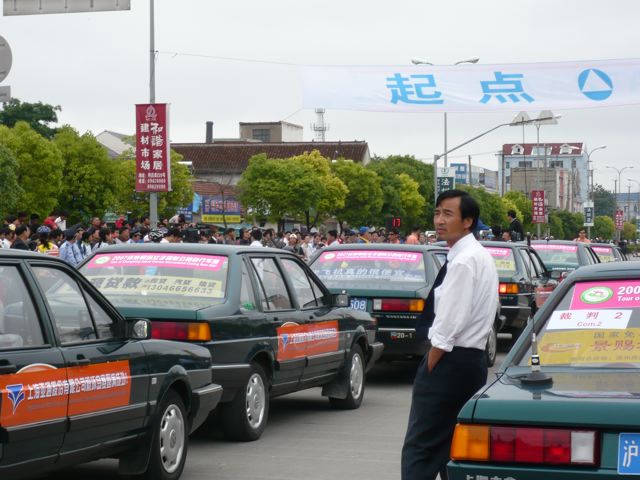
The top finishers in the time trial were the riders who had traveled with their time-trial bikes: the Giant pro team, the Chinese national team, and the Australian team. It was rough to go out on a time trial with clip-on aero bars, my road bike, and an aero helmet.
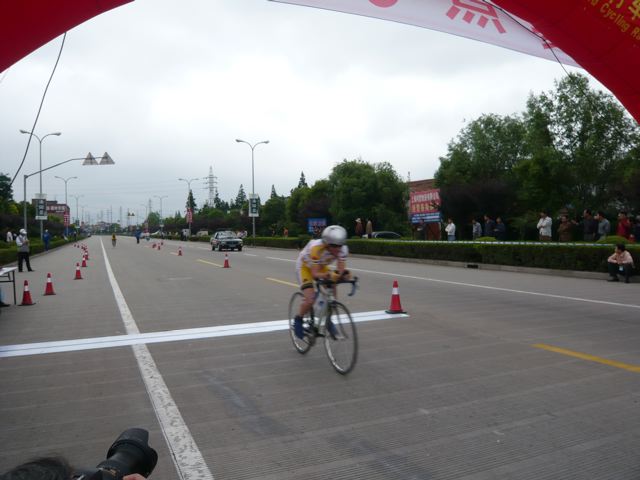
Later that morning, at the awards ceremony, when I saw the lines of teenage girls in formal red gowns flanking the stage, I realized the scale of the event and how important it was to the region. All the events that unfolded over the next few days were run on a very high level. The entire tour was flawless in terms of the officiating. I’ve had exposure to this kind of event in Philadelphia, but to see it unfold over a multi-day period was to experience the height of the sport, the way we see it when we watch European races on television. And there I was in the middle of it, proud to be dressed up in my pro kit!
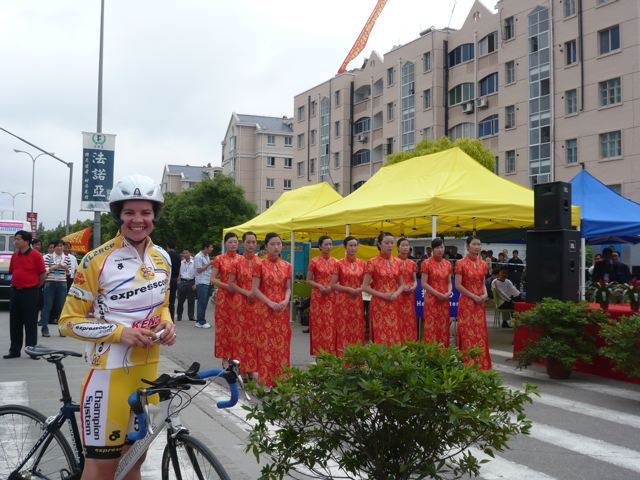
Day Three: City Criterium
The opening ceremony took place the next morning, prior to the first of the four races. We rode our bikes across the stage and then promptly left for the starting line. The ceremony, I was told, was televised and went on for an hour and a half. I’m sure it was amazing—with clouds of colorful balloons, children holding up flowered archways, and hundreds of people performing traditional Chinese dance and drumming—but we didn’t get to see any of it.
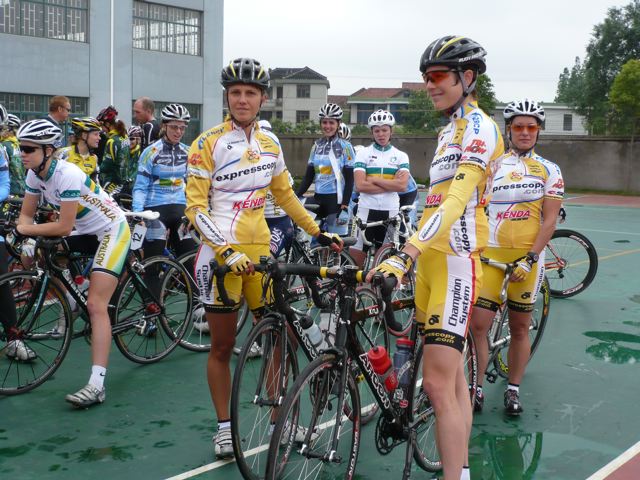

That day’s criterium was 65.6 kilometers—16 laps on a fairly long (4.1 km) course. This is when we first started to see the type of racing that we would to be a part of. The racing style was very different. Some riders decided to advance their positions by cutting across lines, diagonally, through the field. This mostly happened on the corners. It was ineffective and it was dangerous, which made us a little nervous. By the end, though, the riding felt purely like sport. I wasn’t scared, but it continued to surprise me when someone would cut across.
Along the course, the orderliness of the crowds was such that no barricades were needed to keep people off the course. There was only a plastic ribbon. People in street clothes who wore red armbands had official crowd-control status, and the other people seemed to listen to them. No one got on the course or in the way. The crowd lined up and was controlled, which is something that I would never expect to see in New York.
After the race, my team was bonding over how fun it had been, when eight professional photographers surrounded us. We felt like rock stars to be the focal point of so many lenses at once.
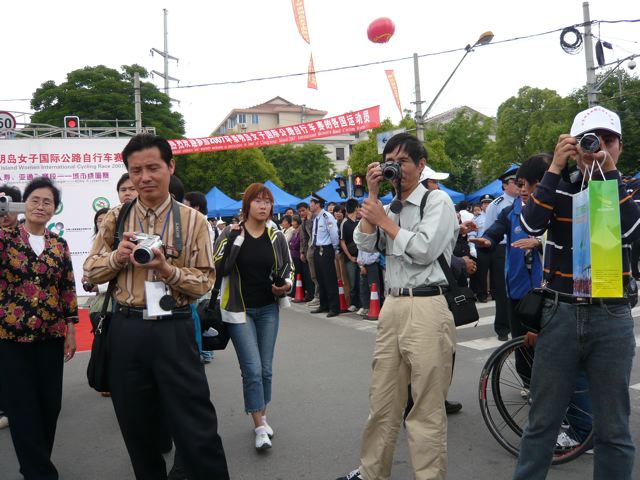
Later that day we went to a national forest, which had a water park. One ride involved getting inside a plastic bubble that they filled with air and Velcroed shut. The object was, essentially, to run across the water’s surface inside the bubble. Stephanie tried it out and performed like a true athlete. Her falls were spectacular!

Day Four: Chongxi Road Race
For the second stage, a 70.8-kilometer road race, the weather was good, with no rain. We wore walkie-talkie earpieces, through which Fasi updated us on the sprint hot spots. We were also able to communicate with one and other, though we didn’t do so effectively until the next day. We were still trying to find out where we fit into the competition. Riding with Stephanie and Alison was still new, and we were a little intimidated by the tactics of the Chinese riders, which involved shoving, shouting, and bullying. This came as a bit of shock. Between the shouting in the peloton and cheering on the roadsides, I had a general sense of confusion. The Dutch, Belgian, Australian, and South African teams were unintimidated, and shouted back at the Chinese riders. It took some adapting, but over the four stages of the tour, I started to feel better in the peloton and each day was more fun as I got a sense of how the races would go. None of my teammates had ever experienced this level of physicality.
The color and spectacle that we glimpsed at the opening ceremony was trailed out along the roads of the entire course. We saw all-female drum corps, but hardly heard them. Racing past, we just got little vignettes. I wished I could stop to experience it, but the little snippets, the split-second snapshots started to add up: school children on little chairs, factory workers outside in their aprons. Over the narrow tree-lined streets of villages, it started to add up. At the final 3 km, I went to the front and started pulling to help Alison and I got really tired. Eighty people were behind me, going over 50 km/hr. When I couldn’t pull any more, everyone went around me and I found myself at the back of the peloton for the finish. I think I came in 54th that day.
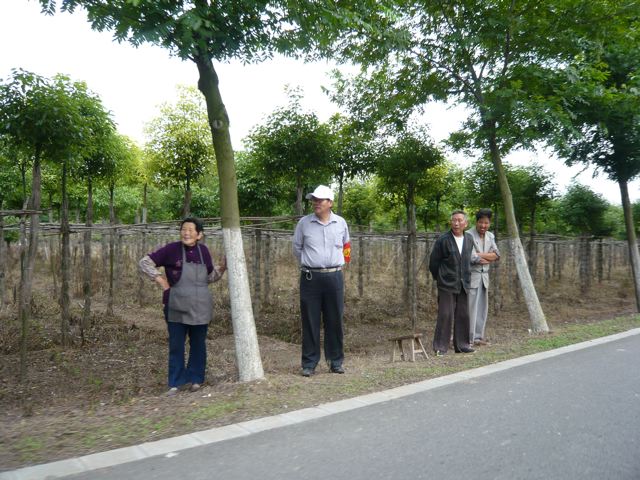
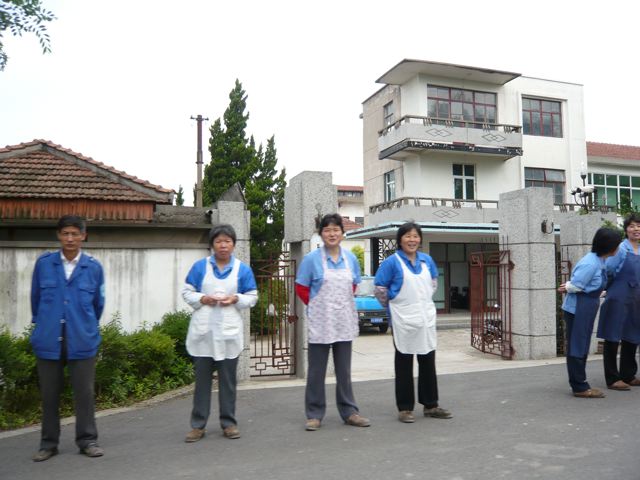
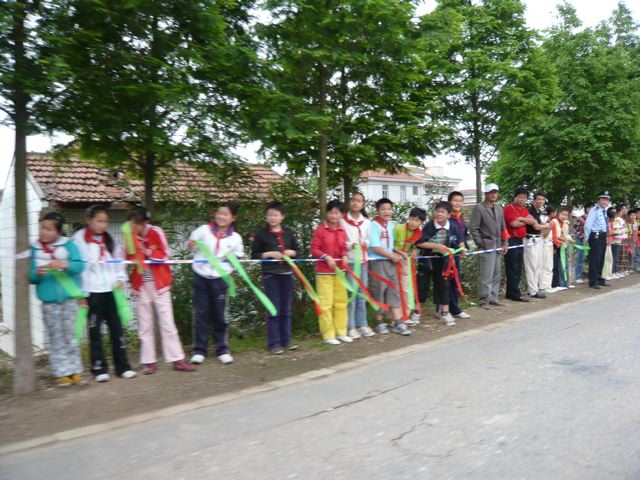
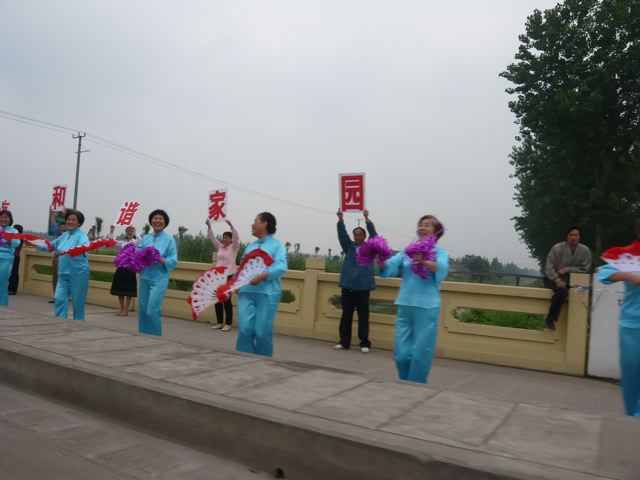
That evening at our team meeting, Alison asked us to give her more support since she was the best sprinter on the team and with the fast course, it was a total sprinters race. She also asked that when we were not active on the front, we ride together so that we could communicate and know what was going on. Everyone was excited to have a common goal to work toward, a job inside of the race.
Tour of Chongming Island Pt. 2
Section head text.
2 Comments
Comments are closed.

Ellen: A great report. The trips sounds like lods of fun!!
Ellen Your report is so interesting and I love your pictures. What an experience once in a lifetime. Love Edie